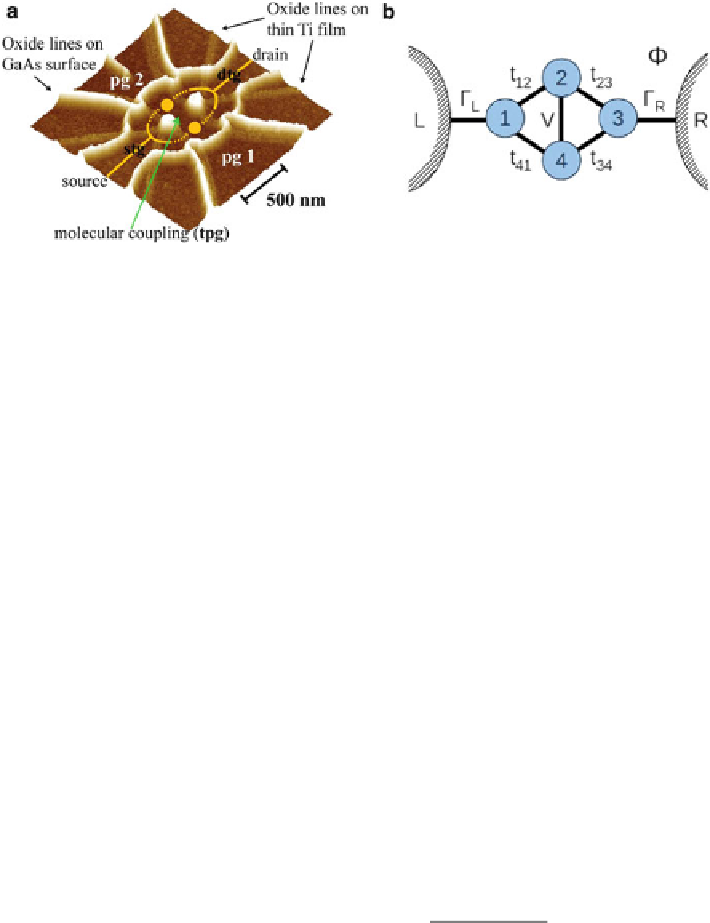Biomedical Engineering Reference
In-Depth Information
Fig. 8.1
(
a
) SFM image of the sample surface of the experimental setup of [
6
]. (
b
) Scheme of the
theoretical model based on a 4-QDs ring. Leads L and R represent the source and drain terminals,
and the QD2-QD4 coupling parameter allows the formation of molecular states
quantitative connection to specific experimental measurements. In line with that, we
shall analyze the sensitivity of the conductance upon variation of the various model
parameters. In particular, it will be shown that the concept of pathways becomes
useful in predicting the energy at which the onset and cancellation of conductance
occur.
8.2
Basic Concepts
8.2.1
Dynamical and Magnetic Phases
The phase of the wave function describing the electron motion
ψ
(
r
)=
A
exp
[
i
φ
(
r
)]
depends on the potential energy
U
at a given position. In the simplest case of an
electron moving in
a one-dime
nsional constant potential
U
, its phase varies with a
wave vector
k
(
r
)
=
2
m
(
E
−
U
)
/
h
. The phase acquired after traveling from
x
1
to
x
2
is
k
(
x
2
−
x
1
)=
k
Δ
x
. When the potential energy varies with the position, the phase
adds according to
x
2
φ
=
φ
0
+
k
(
x
)
dx
,
(8.1)
x
1
2
m
where
φ
0
is an arbitrary initial phase and
k
(
x
)=
[
E
−
U
(
x
)]
/
h
now depends on
the position. The phase accumulated along its propagation,
φ
−
φ
0
, is the analogous
of the phase acquired by light traveling along an optical path, with the potential
energy playing the role of the optical refraction index. Making optical waves travel
successively along a path and its reverse does not cancel both phases, but adds them.
In the same way, the quantum phase of an electron traveling along a trajectory and
its reverse does not vanishe but evolves increasing it always in the same direction.
This phase due to the motion along a trajectory through external potentials is named
dynamical phase
. In QD arrays, such external potentials are experimentally realized

